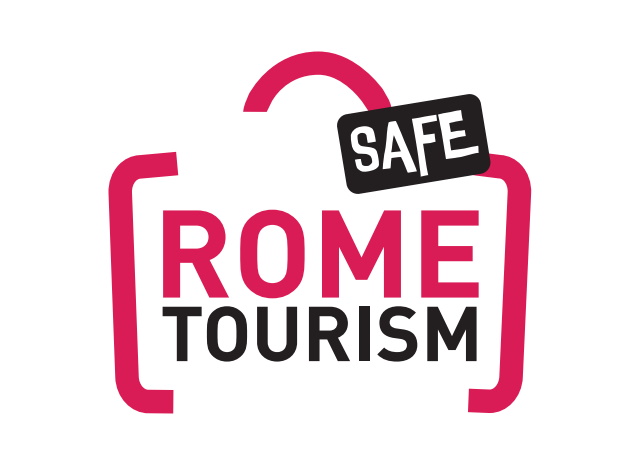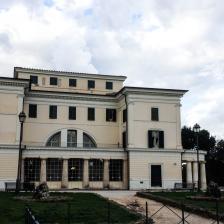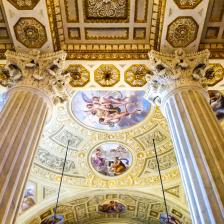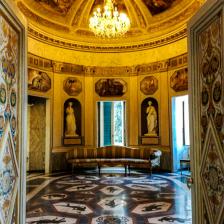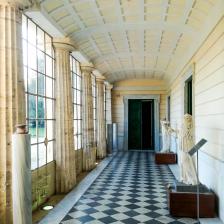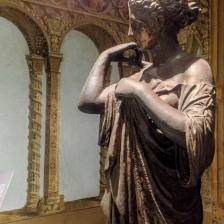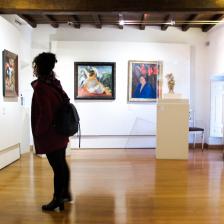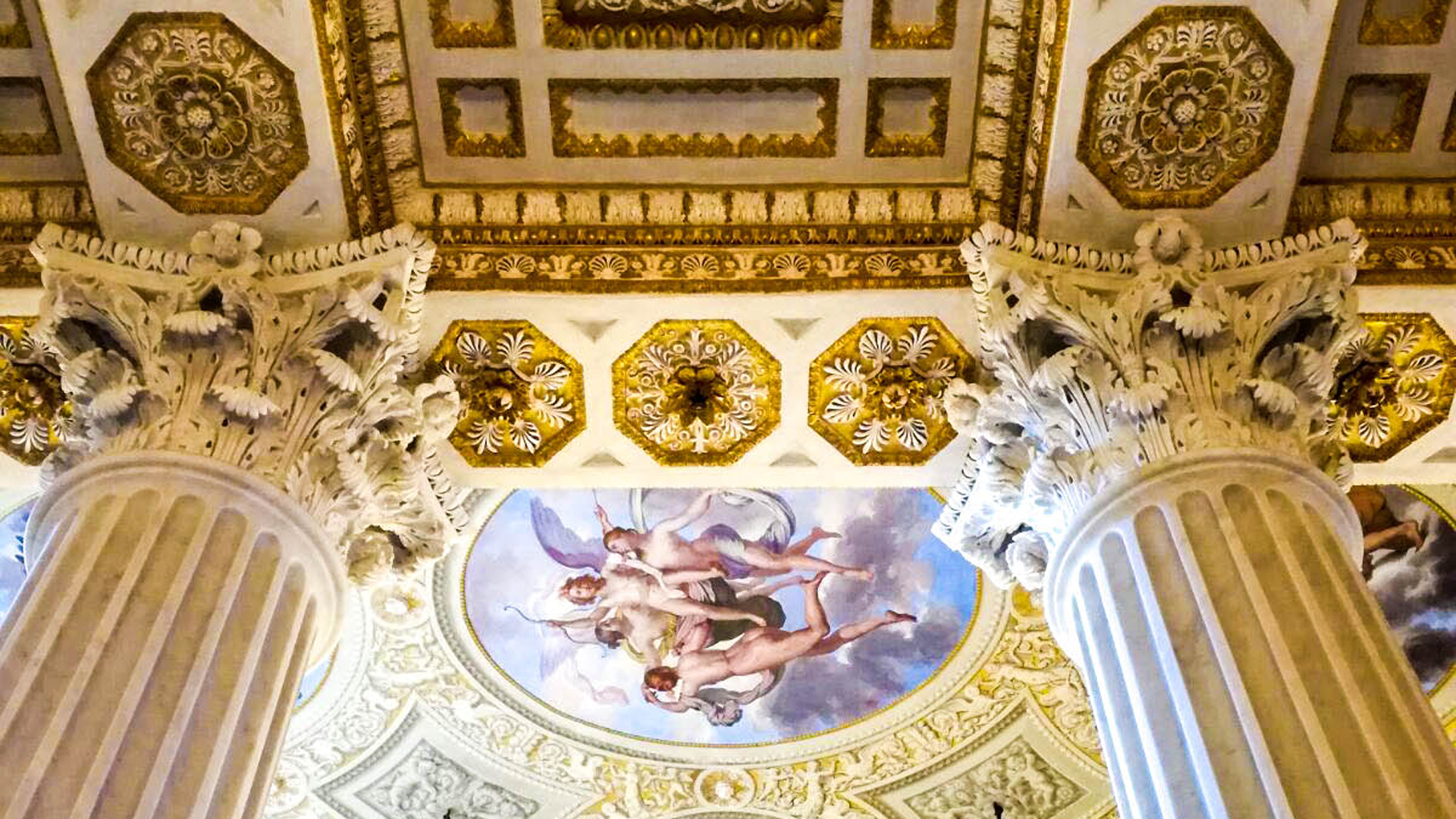






The Casino Nobile is the results of works carried out first by Giuseppe Valadier, who in the very early years of the 19th century had the task of making the buildings and the park of the villa purchased by Giovanni Torlonia more sumptuous and monumental and then by the painter and architect Giovan Battista Caretti, who a few years later embellished the Casino using the most talented artists and craftsmen of the time.
The central core of the palace designed by Giuseppe Valadier was the Salle à manger (today’s Sala da Ballo). Lit by a single large window and lined with mirrors that artificially multiplied the sources of light, the room was decorated with stuccoes, paintings and plaster bas-reliefs by Antonio Canova (3 are now on display in the “Bercerau” Room). In 1832 Alessandro Torlonia commissioned Giovan Battista Caretti to make the Casino Nobile even more imposing: a majestic pronaos with monumental loggia was thus added to the simple façade of the building, introduced a wide access cordonade. The most relevant intervention was the interior decorations, with different styles and motifs so as to define the spatiality of the rooms in a new and original way.
The ground floor and the “piano nobile” had functions of high representation, while the basement and the second floor were dedicated to services and servants’ quarters. The basement floor provides access to the air-raid shelter and the bunker that Mussolini had set up under the Sala da Ballo of the Casino (which was his residence from 1929 to 1943) and under the building’s side yard. The basement also provides access to an underground chamber, discovered during recent restoration work, decorated by Giovan Battista Caretti in the style of an Etruscan tomb.
Today the Casino is home to the Museo della Scuola Romana - Museum of the Roman School, one of the most interesting and vital currents in 20th-century Italian art, in the period between World War I and World War II. It ranges from the protagonists of Magic Realism such as Antonio Donghi to the “School of Via Cavour”, with works by Mafai and Antonietta Raphaël, and to the new realist language that matured on the heels of World War II by artists such as Fausto Pirandello, Renato Guttuso, and the young Renzo Vespignani.
Casino Nobile has been as a venue to host high-profile events since its origins. The Sala da Ballo and the garden surrounding the facility provide a quite extraordinary setting for high-profile occasions and corporate or private events. For more information, visit the dedicated page.
Casina delle Civette (The House of Owls)
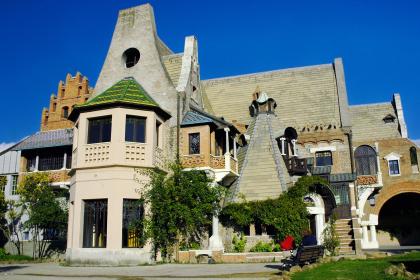
 Condividi
Condividi
Museums of Villa Torlonia - Casino dei Principi
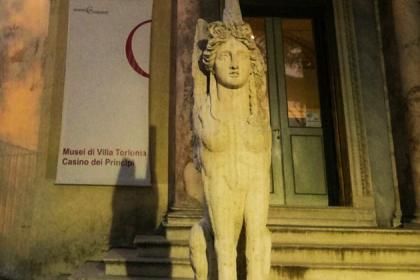
 Condividi
Condividi
The Villa Torlonia Museums
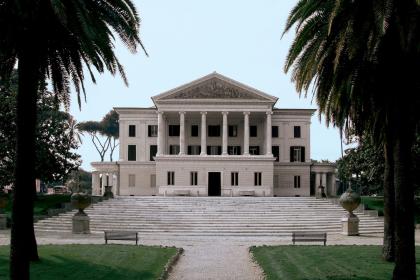
 Condividi
Condividi
Villa Torlonia
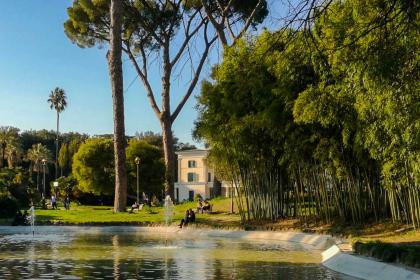
 Condividi
Condividi
Information
Monday closed24 and 31 December 9.00-14.00Last admission 1 hour before closing time
For updates and guidelines please check the > official websiteBefore planning the visit, CONSULT THE NOTICES
 Condividi
Condividi
Location
To find out about all accessibility services, visit the Rome accessible section.












































